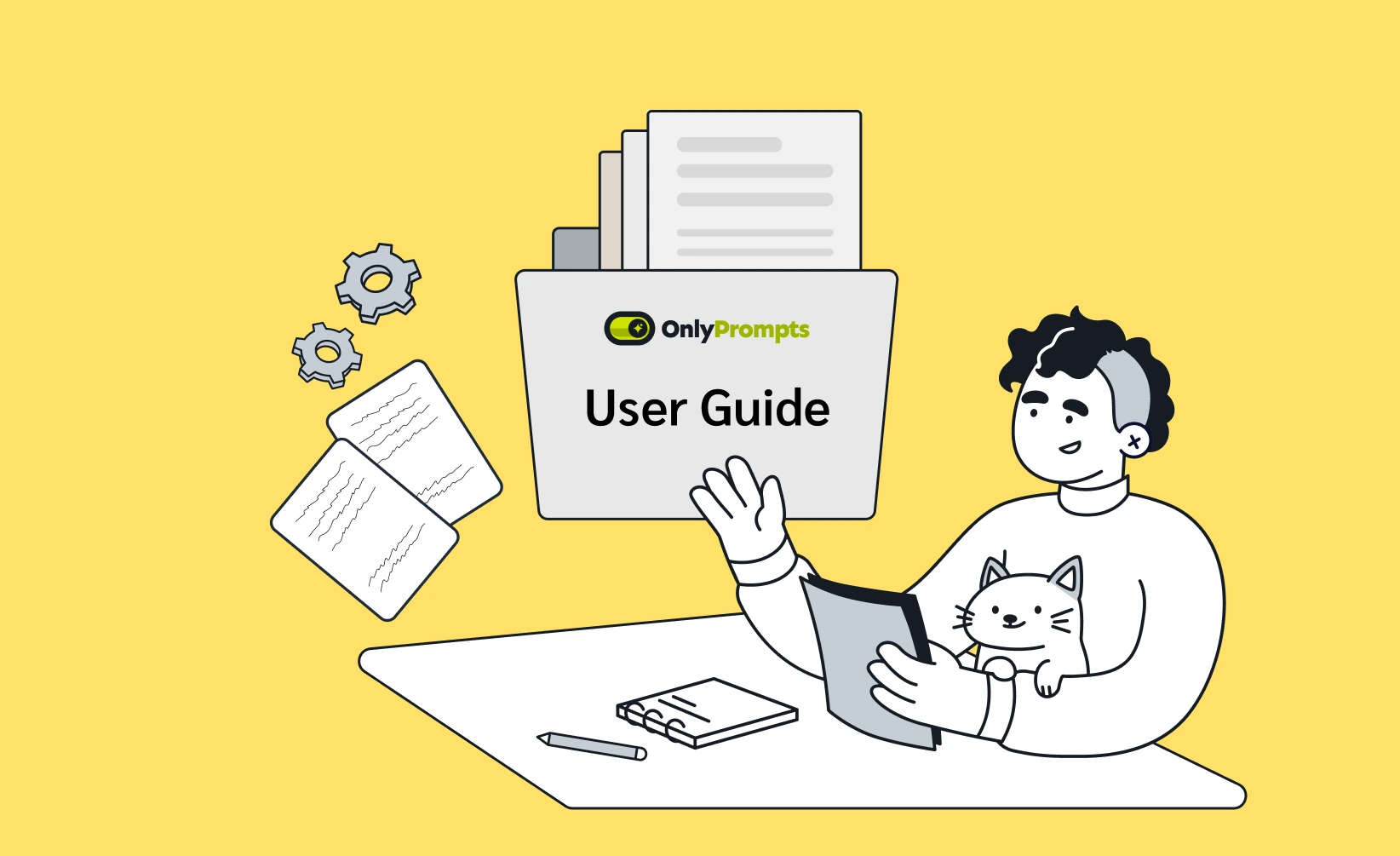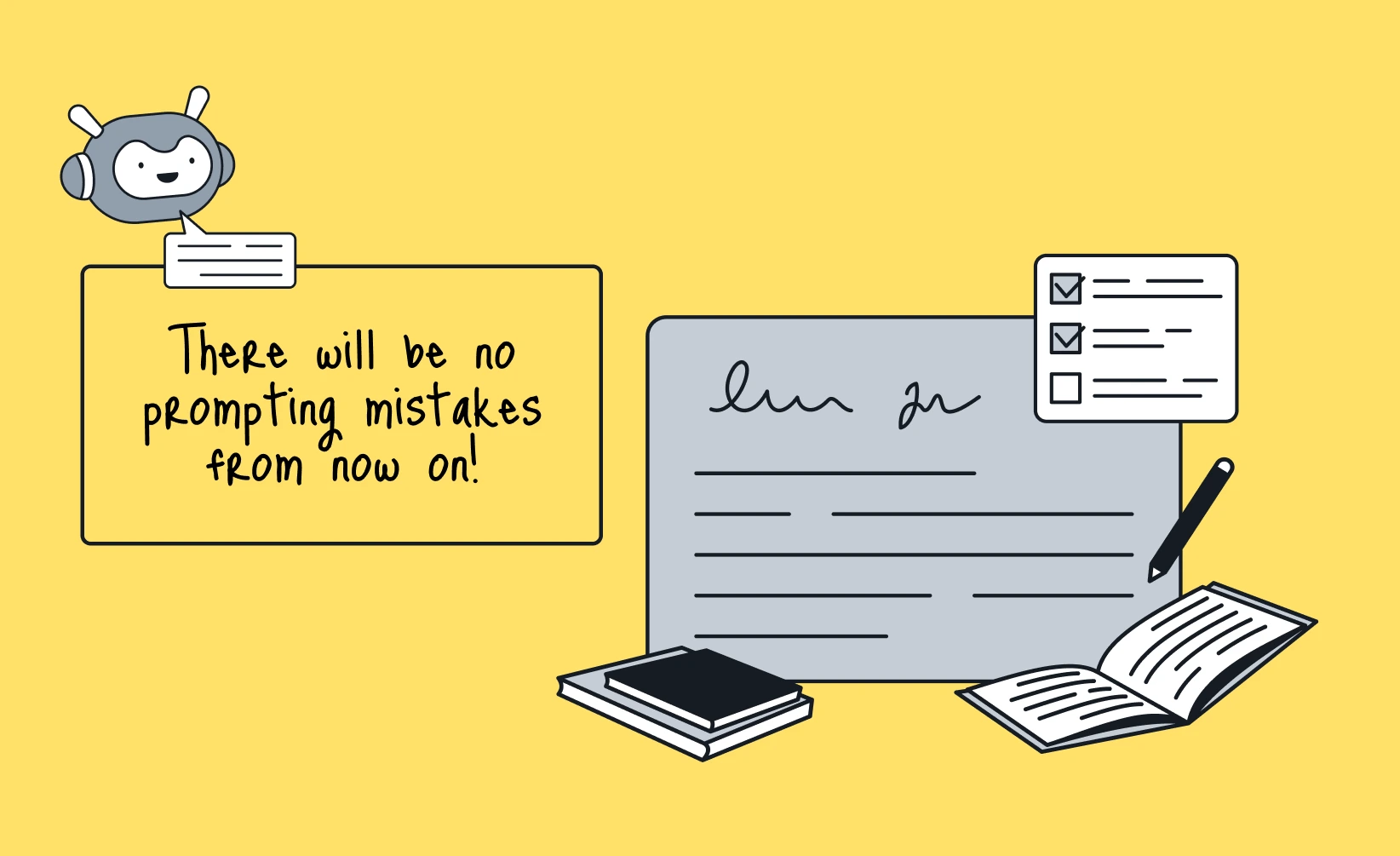Have you ever felt like your conversations with AI models hit a dead end? While many of us are familiar with prompt engineering and the basic requirements for writing effective AI prompts, there's always room for improvement.
According to research by OpenAI, well-crafted prompts can significantly enhance the quality and accuracy of AI-generated text. Whether you're a beginner or an experienced user, learning how to write effective prompts can greatly improve your interactions with AI models like ChatGPT, Claude, Gemini, and more.
In this guide, we've compiled essential strategies for crafting prompts that yield the best results from AI models, along with a handy checklist to help you remember these tips. Read on!
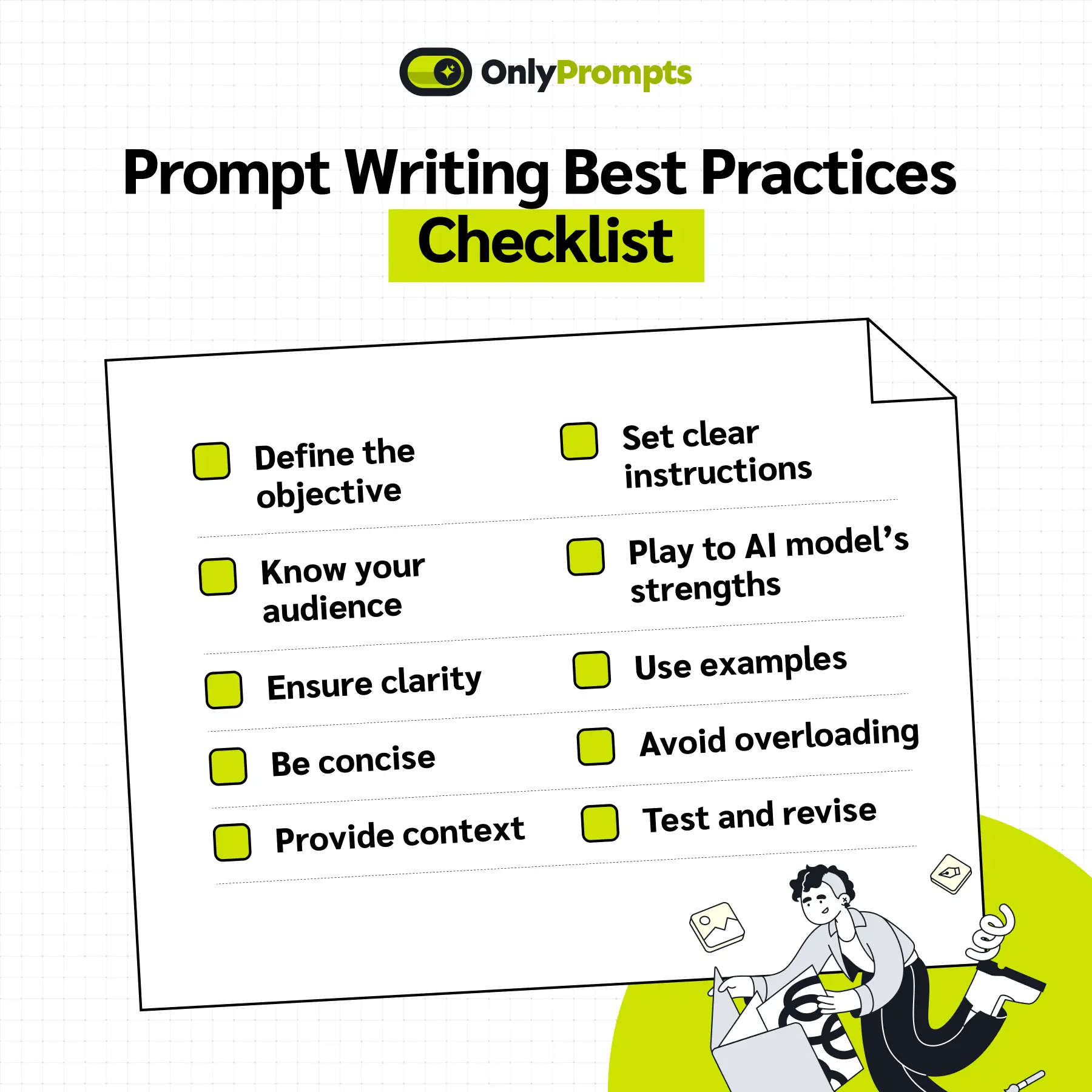
Understand Your Objectives
Before you start writing your prompt, it’s crucial to understand what you want to achieve.
-
Define the goal: Are you looking for a creative story, a technical explanation, or a simple answer to a question?
E.g., “Write a detailed explanation of quantum computing suitable for high school students.”
-
Know your audience: Tailor your prompts to the level of detail and complexity your audience can handle.
E.g., “Explain the process of photosynthesis to a 5-year-old.”
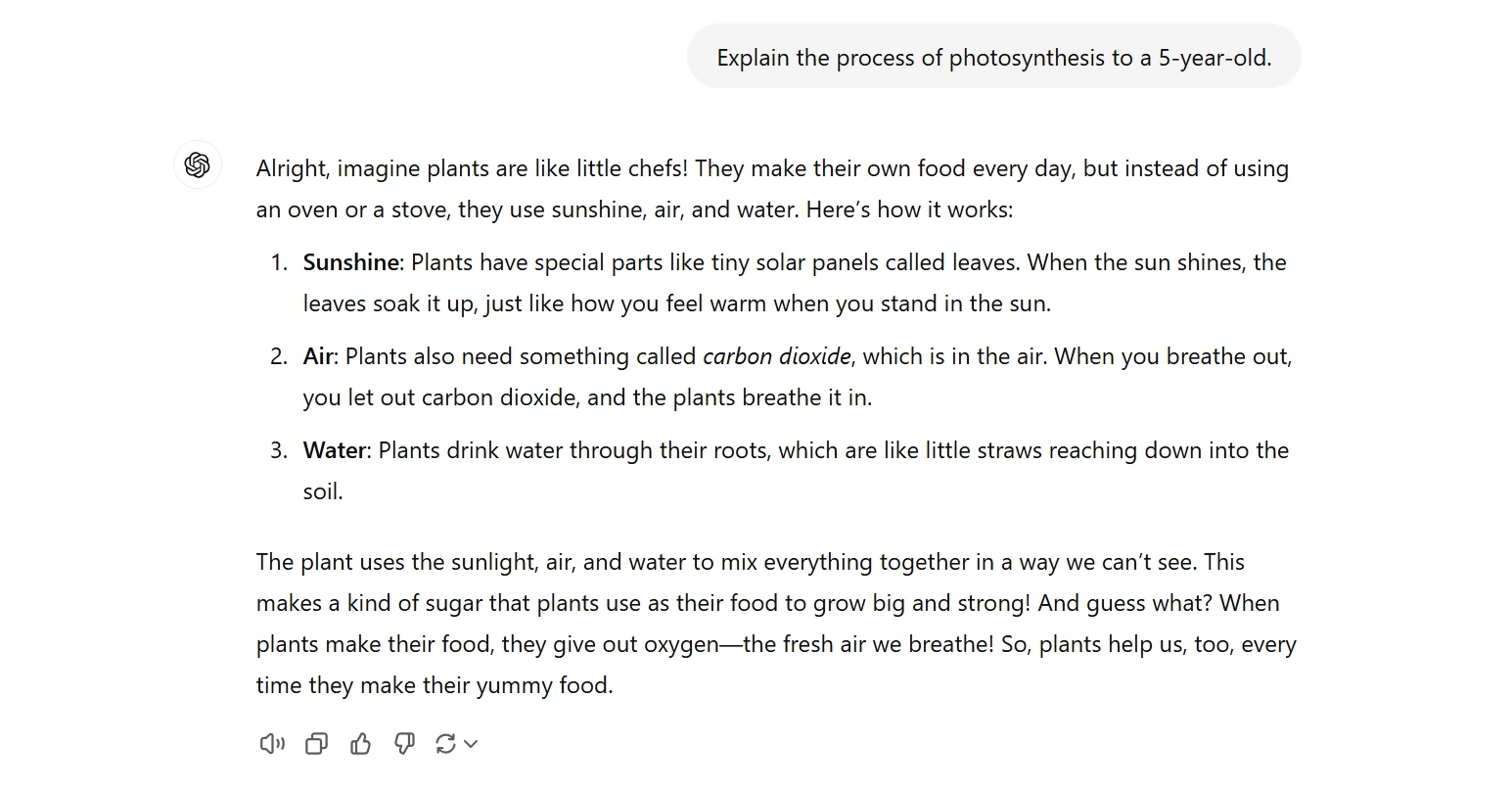
Use Clear and Concise Language
The clarity of your prompts can significantly influence the quality of the response.
-
Avoid ambiguity: Be specific with your requests to avoid vague answers.
E.g., instead of “Tell me about space,” say “Describe the process of star formation.”
-
Use simple language: Aim for brevity and simplicity to ensure the AI understands your request.
E.g., “List the main causes of climate change.”
Include Context and Details
Specificity helps in getting precise answers.
-
Include details: Provide relevant information to guide the AI in generating accurate responses.
E.g., “Write a formal letter to a company applying for a job as a software developer.”
-
Context is key: Provide background information if needed to set the stage for the AI.
E.g., “Describe the challenges of remote work during the COVID-19 pandemic.”
Use Examples
Incorporating examples in your prompts can guide the AI in understanding the desired format, style, or depth of response.
-
Provide a template: Offer a sample structure or format to help the AI generate responses that align with your expectations.
E.g., instead of simply saying, “Write a poem,” you might say, “Write a poem about spring, using imagery and metaphor, similar to: ‘Blossoms bloom with morning dew, painting the world anew.’”
-
Clarify tone and style: Use examples to demonstrate the tone or style you want the AI to adopt.
E.g., if you need a formal response, you could say, “Compose a formal email to a professor requesting an extension on an assignment. For instance, start with ‘Dear Professor Smith, I hope this message finds you well.’”
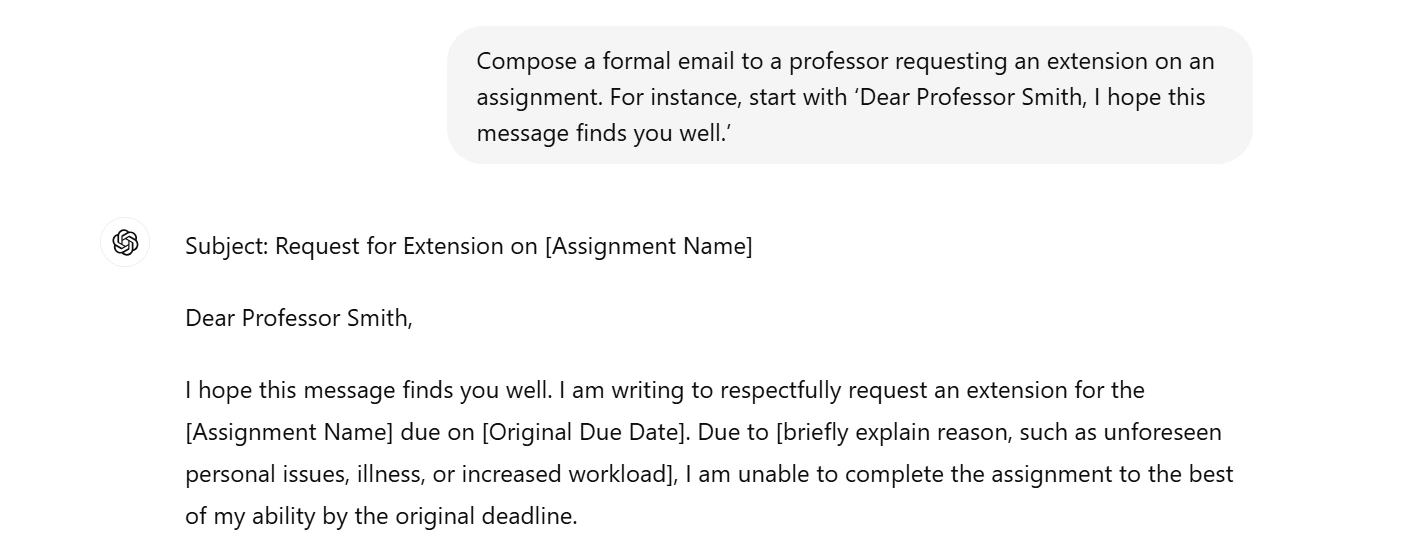
Experiment and Iterate
Sometimes, the first prompt might not give you the desired output. Don’t hesitate to tweak it.
-
Test and tweak: Experiment with different phrasings and structures.
E.g., “Generate ideas for a science fiction novel set in a dystopian future.”
-
Review and revise: Analyze the responses and refine your prompts accordingly.
E.g., “Rewrite the introduction to make it more engaging and concise.”
Approach with a Structure
Having a structured approach can lead to better results.
-
Use instructions: Start with clear instructions like “Explain,” “Describe,” or “List.”
E.g., “Explain the benefits of a plant-based diet.”
-
Break down complex requests: Divide complex queries into simpler parts.
E.g., “First, describe the main principles of blockchain. Then, explain its applications in finance.”
Leverage AI’s Strengths
Just like any tool, different AI models have unique strengths and weaknesses. To get the best results, it's crucial to understand what your chosen AI excels at and tailor your prompts accordingly. Here's how:
Play to the Model’s Strengths
-
Identify the AI expertise: Many AI models specialize in specific tasks. Some, like ChatGPT and Gemini, are strong in creative writing, generating different writing styles, and summarizing information. Others might excel at data analysis or code generation. Research your chosen AI to understand its capabilities.
-
Craft prompts that align: Once you know the AI's strengths, craft prompts that tap into them.
Avoid Weaknesses
-
Recognize limitations: AI models are still under development, and their knowledge base might have gaps. Highly specific or niche topics might be beyond their current grasp.
-
Adjust your approach: If your initial prompt delves into an area the AI might struggle with, adjust it or provide additional context.
E.g., instead of a vague prompt like "Write a poem about a rare plant," give details about the plant's characteristics and desired emotional tone.
Common Pitfalls to Avoid
Avoid these common mistakes to improve the quality of your prompts.
-
Overloading the prompt: Don’t cram too much information into one prompt.
E.g., instead of “Explain the history, current uses, and future potential of AI,” break it down into separate prompts.
-
Being vague: Lack of clarity can lead to irrelevant or off-target responses.
E.g., instead of “Tell me something interesting,” say, “Tell me an interesting fact about the Great Wall of China.”
Discover OnlyPrompts
Crafting effective prompts is a skill that improves with practice. By following these tips, you can enhance your interactions with AI and get the most out of these powerful tools. For those looking to take their prompt-writing skills to the next level, OnlyPrompts is here to help!
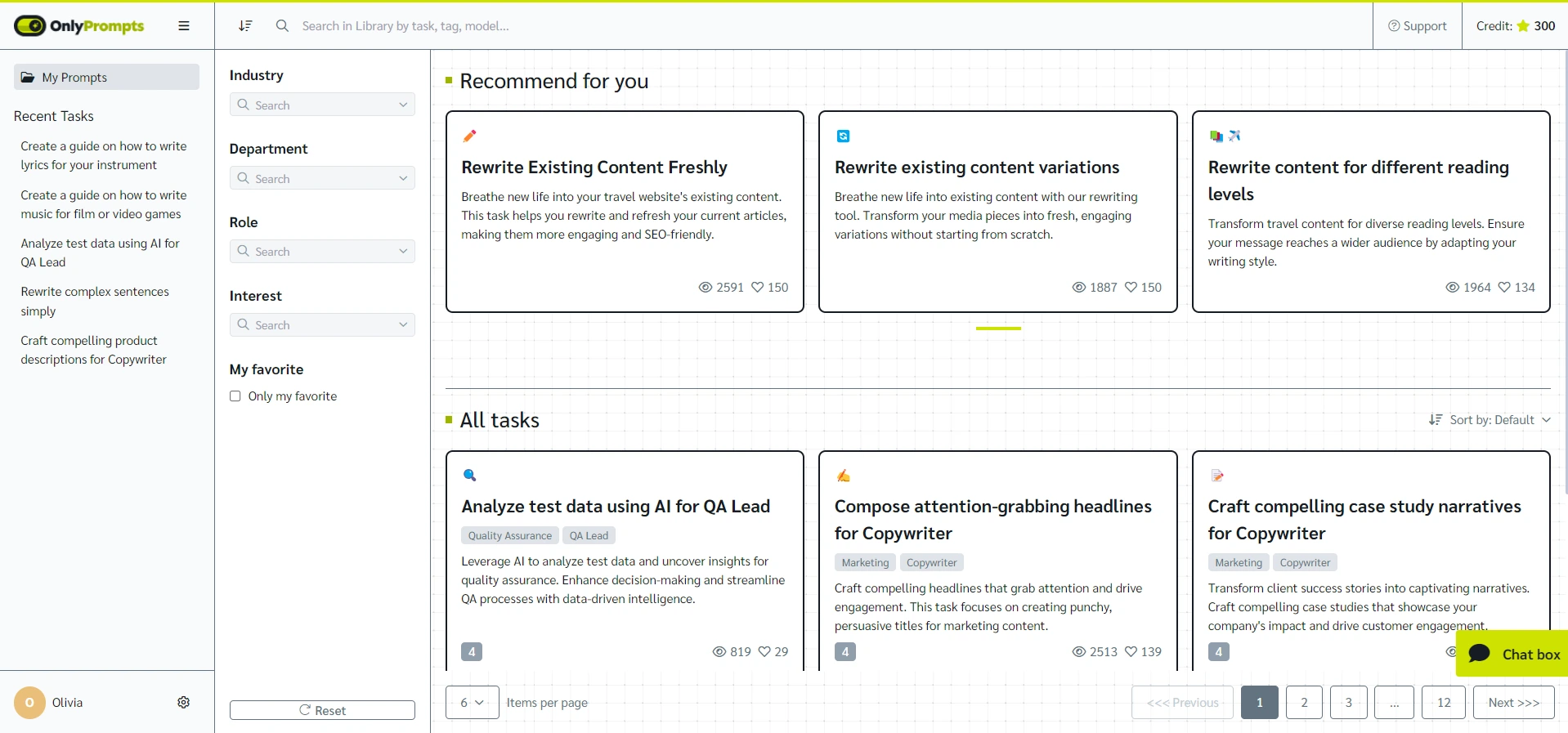
No more writing prompts from scratch, with over 150,000 prompt templates for 37,000+ tasks here at OnlyPrompts; you can search, test, compare, and edit prompts to find the perfect fit for your needs.
Start optimizing your prompts today with OnlyPrompts and experience the future of AI interaction!



